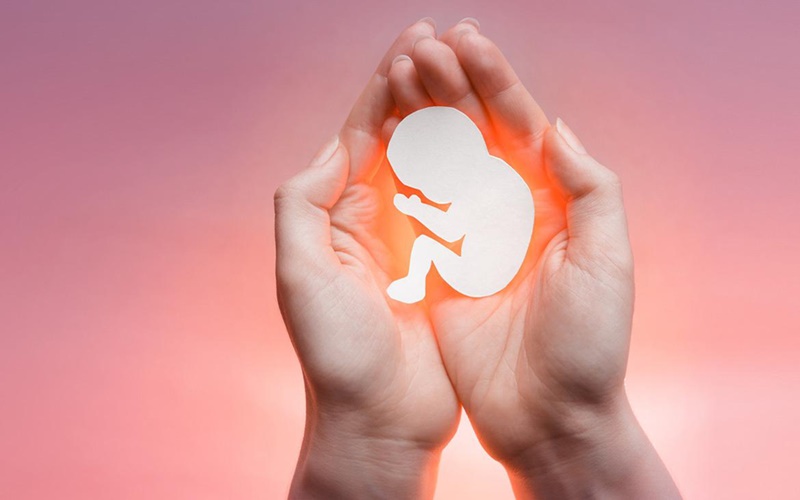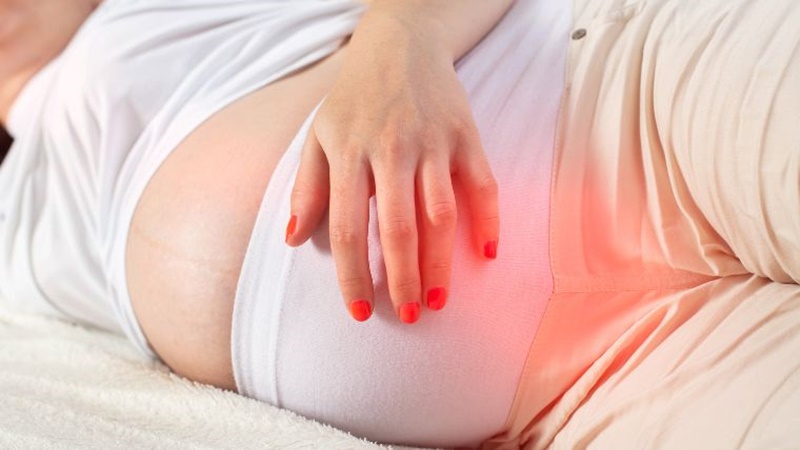For a smooth and favorable pregnancy, it’s crucial to be aware of the period when the risk of miscarriage is highest, so that effective preventive measures can be taken. Let’s delve into the details of this topic in today’s article!
1 When is the Most Vulnerable Time for a Miscarriage?
Weeks 3-4 of Pregnancy
Most women are unaware of their pregnancy during this early stage, hence the high rate of miscarriages occurring within the first 3-4 weeks, accounting for approximately 50-70% of all pregnancies.
Week 5 of Pregnancy
The fifth week of pregnancy is one of the most critical periods with an increased risk of miscarriage, warranting special attention.
Weeks 6-7 of Pregnancy
During the sixth and seventh weeks of pregnancy, it is possible to detect the fetal heartbeat via ultrasound, and the miscarriage rate during this period is relatively low, at only 5%. It is advisable to learn more about the development of a 7-week-old fetus to understand how to effectively prevent miscarriages.
 When is the Most Vulnerable Time for a Miscarriage?
When is the Most Vulnerable Time for a Miscarriage?
Weeks 8-13 of Pregnancy
During the eighth to thirteenth weeks of pregnancy, the miscarriage rate stands at approximately 2-4% of all cases.
Weeks 14-20 of Pregnancy
From the thirteenth to the twentieth week of pregnancy, the risk of miscarriage decreases significantly to just 1%. During this period, you can breathe a sigh of relief and feel more at ease as the worry of miscarriage diminishes. However, it’s important to maintain a healthy lifestyle and appropriate daily routines to ensure a robust pregnancy.
2 Miscarriage Rate by Mother’s Age
 Miscarriage Rate by Mother’s Age
Miscarriage Rate by Mother’s Age
The age of the mother plays a role in the natural miscarriage rate. Here is a breakdown of the natural miscarriage rate by the mother’s age:
-
Women under 35 years old have a 15% risk of miscarriage.
-
Women between 35 and 45 years old have a 20-35% risk of miscarriage.
-
Women over 45 years old have a 50% risk of miscarriage.
It’s important to note that women who have previously experienced a miscarriage, regardless of their age, have a 25% chance of miscarriage in their subsequent pregnancy.
3 Other Factors Leading to Natural Miscarriage
 Other Factors Leading to Natural Miscarriage
Other Factors Leading to Natural Miscarriage
In addition to the time frames associated with a higher risk of miscarriage, it’s essential to consider other factors that are the primary causes of natural miscarriages in pregnant women:
-
Age: The risk of miscarriage increases with the mother’s age.
-
Weight: Being overweight or underweight significantly increases the risk of miscarriage.
-
Health Status: If the mother has serious medical conditions such as diabetes or hypertension, the risk of miscarriage is higher.
-
Smoking, Alcohol Consumption, and Substance Use: These are common factors that elevate the risk of miscarriage in pregnant women.
-
Genetic or Chromosomal Issues: During conception, if a segment of a chromosome from either the father or mother is missing, it can impact the fetus’s development, leading to miscarriage. Additionally, if the fetus has genetic abnormalities, natural selection may intervene, resulting in miscarriage.
This concludes our comprehensive overview of the most vulnerable periods for miscarriage and the associated factors. We hope that this article has equipped you with the necessary knowledge to navigate a healthy and safe pregnancy!
Source: marrybaby.vn

































